PAGE 3 of 3 - Add some lenses to the LEDs
Add some lenses to the LEDs
Due to Christmas and New Year's Eve, the shipment from China took a life and a day to arrive. Additionally, i had some job to do these days and it was absolutely impossible to do any project at all. But now that i'm back, let's put some lenses on the LEDs
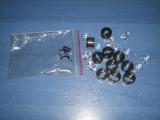 |
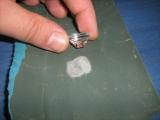 |
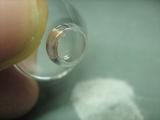 |
| So i got some 45 degrees lenses from ebay, dirt cheap. |
I gently grinded the back side of the lens to generate a flat surface |
This flat surface will fit on the LED's base, so it has to be as flat as possible |
And now its time for the superglue!
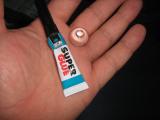 |
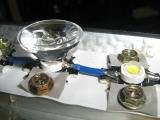 |
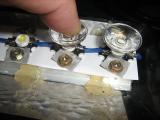 |
| Yes superglue |
This is how the lens will fit the LED |
Notice that i do not use the black cover of the lenses. |
I am not quite sure how stable the lenses will be with the superglue, i just hope it will be strong enough. I have a plan B if it fails - This plan is called "epoxy"... I used generous amount of superglue, although i know that half of it would be lost.
Eventually, i let i dry, and here it is:
Here is a comparison test, before and after:
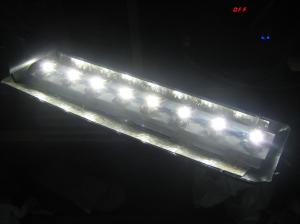 |
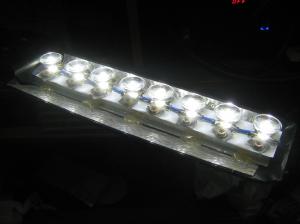 |
| Before - The light is scattered all around |
After - The light is more or less concentrated |
I tried to make also before and after photos on a surface, but due to the automatic rightness that the camera sets, it was impossible to show the difference. The result is much better now. The light is concentrated there where the lenses point at, and more important is that the LEDs do not blind me any more due to their wide angle.
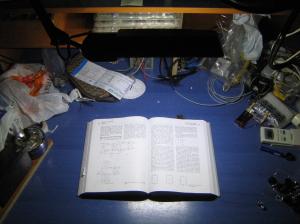 |
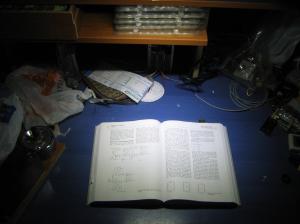 |
| Without the lenses (before) |
With the lenses (after) |
As you can see, the surface appears dimmer with the lenses. But this is only because the light is more concentrated. The camera sets a max brightness threshold and therefore the surrounding area appears much dimmer. The fact is that the concentrated light is much more useful for my electronics workbench - I want max brightness, not ambient light.
Comments
At 16 October 2013, 16:34:59 user santosh wrote: [reply @ santosh]sir,i want to design an led driver to drive 25nos. of 1w led please help me..pls
At 6 June 2013, 16:31:48 user Larry wrote: [reply @ Larry]Nice refurb. I noticed the shorting of the screws before I went to the second page and saw you solved that problem. I'm getting into the new high power LED stuff myself and found an easy solution to the washer for mounting screw problem. Use rubber hose and cut into 1/8" lengths with a pair of wire cutters. Very fast to make lots of rubber (non-conductive) washers. Use 1/8" diameter hose (or whatever size screws you are using, although all star-based LED's I have seen you must use #4 or smaller screws) Viton (400 degrees F max) or Norprene (200 degrees F max) hose.
keep up the good work.
At 17 January 2013, 21:30:13 user Metalshrine wrote: [reply @ Metalshrine]@Giorgos Lazaridis You are right. I guess I was too tired that time. However, congratulations for the lamp.
At 2 January 2013, 9:20:11 user Giorgos Lazaridis wrote: [reply @ Giorgos Lazaridis]@Metalshrine 1/sqr2 = 0.707 so it is the same
At 31 December 2012, 8:54:34 user Metalshrine wrote: [reply @ Metalshrine]Man, I think you have a mistake at the beginning. Vrms*sqr2=Vpp. At least this is the way I know it.
At 10 December 2012, 18:00:40 user spi wrote: [reply @ spi]I have the exact same lamp and i was thinking the exact same thing. Nice work! |
|
 HOT in heaven! HOT in heaven!

|
|

 Home
Home
 Projects
Projects
 Experiments
Experiments
 Circuits
Circuits
 Theory
Theory
 BLOG
BLOG
 PIC Tutorials
PIC Tutorials
 Time for Science
Time for Science
 Contact
Contact
 Forum
Forum
 Projects
Projects
 Experiments
Experiments
 Circuits
Circuits
 Theory
Theory
 BLOG
BLOG
 PIC Tutorials
PIC Tutorials
 Time for Science
Time for Science
 RSS
RSS